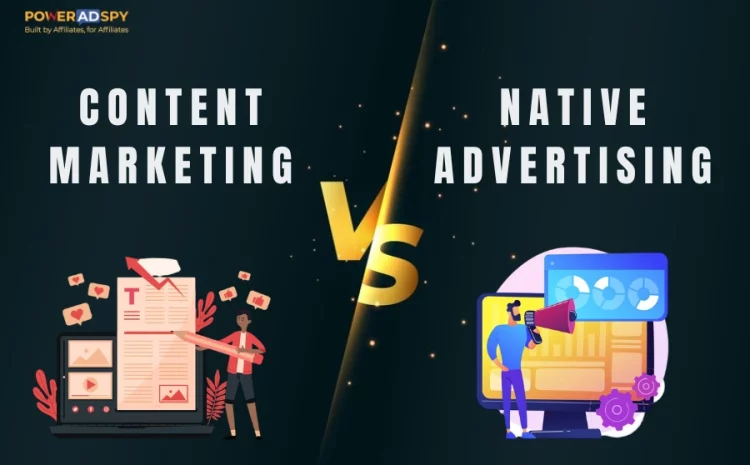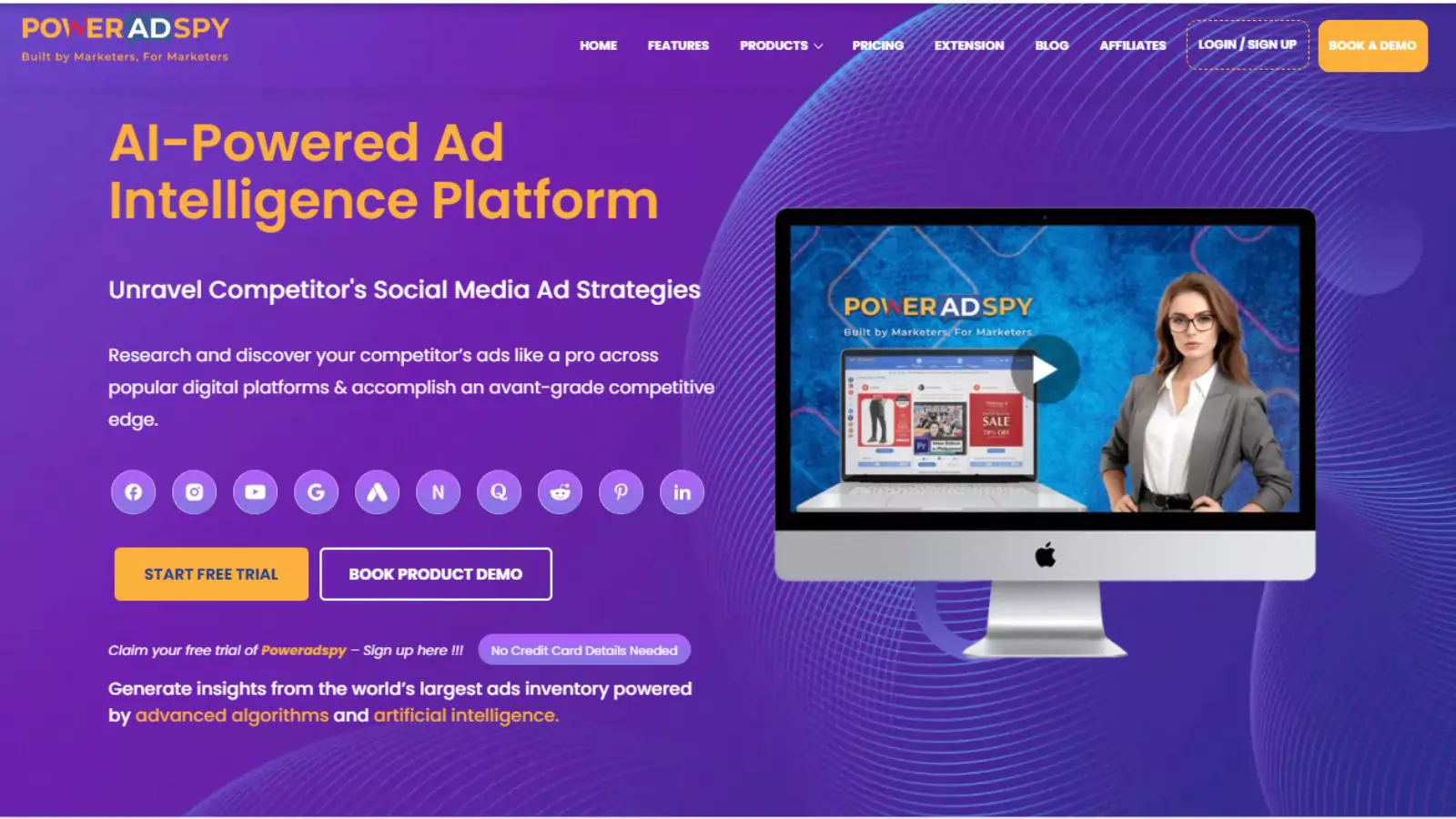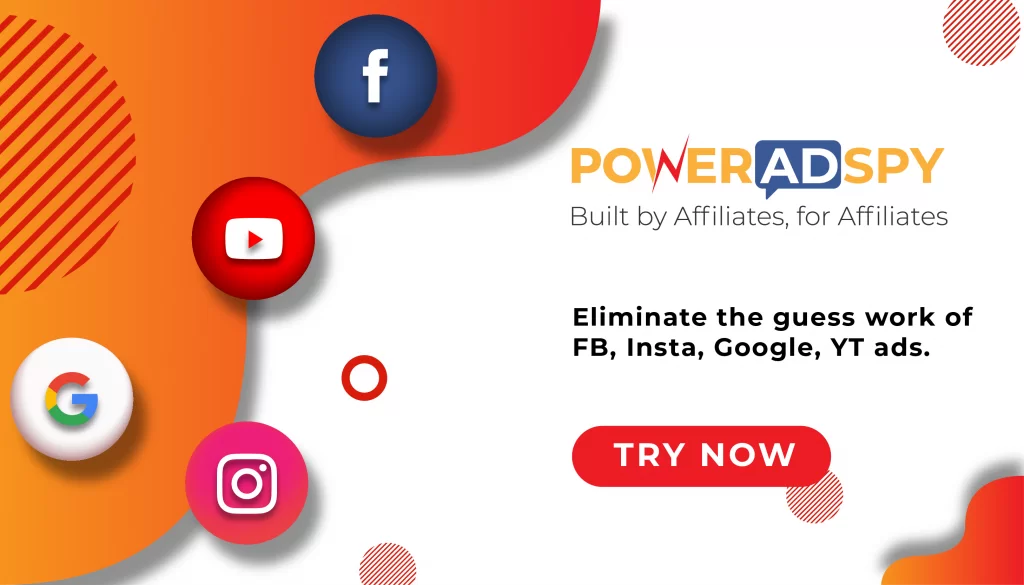Content Marketing or Native Advertising: Choosing the Best Approach
Marketing experts utilize diverse strategies, with native advertising and content marketing standing out as two of the most effective. By leveraging these approaches, companies can boost sales, build lasting customer relationships, enhance brand awareness, and generate new leads. Understanding the similarities and differences between native advertising and content marketing allows businesses to seamlessly integrate and optimize these strategies, maximizing their impact and efficiency. You may more efficiently improve each procedure and combine native advertising and content marketing if you are aware of their parallels and differences.
In this blog, we’ll understand what content marketing and native advertising are and understand the ultimate guide to content marketing vs native advertising. So, let’s begin!
Hit ‘Play’ Button & Tune Into The Blog!
What is Content Marketing?
Content marketing refers broadly to the creation and distribution of several content types. Examples of content marketing include blog entries, checklists and templates, ebooks, whitepapers, infographics, memes, and videos.
Content marketing is both simple and complex. It’s complex because determining which type of content to use and when to use it for the best impact can be challenging. However, it’s also simple because you have a wide array of possibilities to choose from.
This variety allows marketers to adapt their approach based on audience behavior and campaign objectives, making it easier to create engaging and effective content. With PowerAdSpy, you can easily track your competitors’ ad strategies and gain valuable insights to enhance your campaigns.
Purpose of Content Marketing
The primary purpose of content marketing is to inform, amuse, and educate the audience.
Marketers create a customer journey in which a user finds a piece of content, interacts with it, and derives some value or utility from it. After doing this, individuals form a favorable perception of the content. Ideally, they also develop a positive view of the brand or company that produced it. They might even convert or share the content with their local community.
Content Marketing Examples
Marketers have a wide range of options when it comes to content marketing examples. Some of the most typical components of a content marketing plan are listed below.
Blog Posts
A blog post is undoubtedly the most widely used type of internet content. Long-form blog posts are essential to drawing potential clients to your organization because they are an inexpensive approach to increasing organic traffic.
Videos
According to 90% of marketers, video is one of the best ways to boost organic visibility. Videos are not only very effective in increasing interaction, but they are also sufficiently adaptable to be used for repurposing older blog entries.
Infographics
These vivid and eye-catching pictures are best to convey statistics interestingly and entertainingly. They’re also inexpensive and simple to manufacture.
How-to Guides
How-to guides (long, in-depth articles with visually appealing graphics) are best for customer education. But they are also a good tool for content marketing, specifically if your product is more technical.
Case Studies
These articles can be helpful for leads who would like to hear directly from your customers about your business. Prospective clients can learn about the experiences that other individuals have had with your brand by viewing case studies.
Ebooks
Consider eBooks as extended content that enhances your authority. Put differently, prospective clients can see that you wrote a book on a particular subject, strengthening your reputation as an authority in the field.
White Papers
This content form is an in-depth, scholarly, and convincing report on a specific topic. Whitepapers are advanced problem-solving aids intended primarily for an audience.
What is Native Advertising?
Native advertising means advertisements that behave and appear like the websites or apps on which they appear. These adverts basically “blend in” with the website content, giving the impression that the visitor has chosen to interact with the content rather than just seeing advertisements. Marketers can gain a lot from using this soft-sell strategy in their advertising.
Purpose of Native Advertising
Native advertising seeks to provide a seamless user experience by merging flawlessly in their design, format, and tone with the surrounding page or app content. Through this approach, marketers want to lead visitors on a customer journey wherein they peruse and interact with native ad content, understanding it as an inherent component of the website. The user’s engagement and conversion are the desired results.
Native advertising, like content campaigns, aims to offer readers something of value. The primary distinction is that native advertising is a paid model in which advertisers pay for the placement of their advertisements on websites owned by third parties or publishing houses.
Native Advertising Examples
Every time a user browses the internet, they are likely to come across one or more kinds of native ads. The most common native advertising examples are listed below.
Promoted Listings
Generally, you can find these listings on e-commerce platforms like eBay and Amazon. Sponsored designates promoted listings, mainly located on a website’s categories page.
Paid Search Ads
Your listing will appear at the top of the organic search results with the label Ad before the listing if you purchase search advertising. Google Ads, formerly known as Adwords, are one extremely well-known example of sponsored search advertising.
Youtube Ads
YouTube users may see native advertisements either before or during the video. They might also appear in YouTube’s Suggested or Up Next sections.
In-feed Ads
Social media posts, tweets, and feeds on platforms like Facebook and Twitter incorporate these advertisements.
Advertorials
These ads resemble genuine editorial articles. In essence, advertisers purchase the right to have their advertisement appear in respectable newspapers like Buzzfeed, The New York Times, and The Wall Street Journal.
Content Marketing vs Native Advertising
The main points of difference between content marketing vs native advertising are as follows:
Content Focus
Native advertising-related marketing initiatives can showcase content from an organization’s internet channels or advertise its goods and services. For example, one tech company might use native advertising to market its in-depth case studies and another to market its new products.
However, projects involving content marketing are less concerned with advertising a company or its products. Content marketing focuses more on providing consumers with excellent content about a business that builds brand credibility or reliability.
Strategies
Although they both have different strategic approaches, native advertising, and content marketing can both be a part of a business’s overall marketing strategy and techniques. When a company employs native advertising, it concentrates on particular marketing initiatives or campaigns. Moreover, they aim to highlight their content on third-party websites.
In context with content marketing vs native advertising, a company may purchase sponsored advertisements on a news outlet’s website or a social media platform to launch a native advertising campaign. On the other hand, content marketing is not a campaign; it is a long-term plan integrated into a business’s operations.
Benefits
While content marketing and native advertising sometimes have similar overarching objectives, like generating more leads or sales, their functions and benefits usually diverge. The main advantage of native advertising is its ability to reduce user attention caused by other forms of advertising, such as pop-ups.
Native advertising examples can improve visitor navigational experience and make the site feel more pleasant because they fit in with the overall style of the website. Reaching new audience segments that learn about your brand via a third-party vendor website is another advantage of native advertising.
In contrast, the main advantage of content marketing is that it provides clients with in-depth knowledge that can entertain, enlighten, or assist in solving an issue. Content marketing provides consumers with in-depth information or viewpoints about a company to build dependable and enduring relationships with present or potential clients.
Costs
Native advertising is typically more expensive than content marketing because it is a paid media tactic. Marketing initiatives carried out on a third-party vendor platform are called paid media. On the other hand, content marketing is an owned media approach that you can use mostly with content you already own, such as your website or social network accounts.
Audience Perception
It is one of the essential aspects of content marketing vs native advertising. Content Marketing is viewed as helpful and informative, enhancing the brand’s authority and credibility. It is more likely for audiences to engage with and share content they find valuable and relevant.
In contrast, native advertising can be seen as less intrusive than traditional ads but may be met with skepticism if not clearly labeled as sponsored. It generally has higher engagement rates due to the seamless integration with platform content, but there is a potential for backlash if perceived as deceptive.
Also Read:
Creativity: The Secret Ingredient To Every Ad Campaign
The Ads You Can Not See: 10 Best Native Advertising Example
Tips For Using Both Native Advertising and Content Marketing
Consider Your Audience
Choose and advertise creative content that your target audience will find interesting. You can produce content the audience connects with and wants to learn more about by thoroughly understanding the requirements, wants, and attributes. When creating native advertising, consider the kind of people who are most likely to visit that third-party website in addition to your target demographic. In the context of content marketing vs native advertising, understanding the audience preferences for each platform is crucial.
Integrate With Departmental or Business Objectives
Create marketing strategies and initiatives supporting your department or company objectives. You can increase operational efficiency and resource optimization by doing this. For instance, if one of your company’s present objectives is to increase its online visibility, you might concentrate on running native advertisements on websites that are in underdeveloped markets or starting a blog series on your website. The balance between content marketing vs native advertising should align with these broader business goals.
Use Tags
Add relevant keyword tagging to your content. Users can find your content more easily through relevant search results if you use tags for both adverts and content marketing examples. You can find tags that users are already searching for that are related to your content by using keyword search tools.
Tell Stories
Tell engaging stories to your audience regarding the staff, current advancements, history, and business goals. When potential clients are aware of a company’s methods or motivations for selling their products including what it offers, some may become more invested in it.
By telling these kinds of anecdotes, you can help your audience develop an emotional bond with you. There are additional advantages to this emotional connection, like enhanced public perception and heightened brand loyalty.
Set and Track Metrics
Set up and keep track of metrics, also known as key performance indicators (KPIs), for your marketing initiatives and tactics. Establishing precise and quantifiable goals will assist you in determining whether or not you are succeeding.
You can improve certain aspects of your marketing efforts by analyzing your metrics. For instance, you could want to plan how to build more brand trust with your leads if your native advertisements or content marketing contents do not result in as many conversions as you would want.
Moreover, you can use various native ad spy tools to spy on your competitors. It will help you discover the competitor ad strategies, helping you boost your ad campaign. Tools like PowerAdSpy can help you gain complete ad insights from your competitors. Let us have a detailed look at this ad spy tool.
PowerAdSpy: AI-based Ad Intelligence Tool
PowerAdSpy is a robust and reliable AI-based ad intelligence tool designed to empower advertisers with comprehensive competitor ad intelligence. This ad spy tool is very convenient for businesses that aim to discover a perfect ad strategy for their business.
PowerAdSpy allows advertisers to spy on various ad strategies to create the best-performing ads for their business.
Here are some of the vital features of PowerAdSpy that you can use in context with content marketing vs native advertising.
Massive Ad Library
PowerAdSpy provides a vast database of millions of ads across 100+ countries, helping you to spy on your competitor’s ads easily. It empowers you to find the latest successful ads in just a few clicks.
Ad Search:
Users can search for ads based on keywords, advertisers, domains, or other criteria to find relevant ads within their niche or industry.
Ad Analytics:
This ad spy tool provides detailed analytics for ads, including engagement metrics, such as likes, shares, and comments, along with information about the ad performance and target audience demographics.
Targeting Insights:
The tool provides insights into the targeting options used in ads, such as demographics, interests, behaviors, and placements, helping users optimize their targeting strategies.
Ad Creatives:
It allows users to view ad creatives, including images, videos, and ad copy, to understand the competitor’s messaging and design strategies.
Bookmark the Best Ads
You can get detailed ad insights of the ad searches along with audience profiles on PowerAdSpy. It helps in intricately strategizing your ad. You can bookmark them with just a click, and they will be moved to your personalized Ads inventory.
PowerAdSpy can help advertisers check on their competitor ads on Google. It allows them to focus on multiple key performance metrics and create an effective strategy for Google ad campaigns, leading to the maximized effectiveness of the ad campaign.
In Conclusion
Native advertising and content marketing are both useful tools for marketers. To create a successful marketing strategy, it is essential to comprehend their differences and know when to apply each tactic. Through integrating native advertising and content marketing, marketers can develop successful campaigns that effectively engage their target audience and provide desired results.
Understanding the nuances of content marketing vs native advertising allows marketers to leverage each approach to maximize impact strategically. Additionally, using ad spy tools like PowerAdSpy can provide valuable insights into competitors’ strategies, further enhancing the effectiveness of your campaigns. By analyzing how others are using content marketing vs native advertising, you can refine your tactics and stay ahead in competitive marketing.
Frequently Asked Questions
Can content marketing vs native advertising be used together?
Yes, integrating content marketing and native advertising can create a robust marketing strategy. Content marketing builds a foundation of trust and engagement, while native advertising can amplify this content and drive immediate traffic and conversions.
How does integrating content marketing and native advertising benefit a marketing strategy?
Integrating content marketing and native advertising allows marketers to leverage the strengths of both approaches. Content marketing builds a loyal audience and enhances brand credibility over time, while native advertising can drive immediate traffic and conversions, providing a balanced and comprehensive marketing strategy. This synergy highlights the advantages of native advertising vs content marketing.
Are there risks associated with native advertising that are less prevalent in content marketing?
Yes, native advertising carries risks such as audience backlash if ads are not clearly labeled as sponsored, leading to perceptions of deception. Content marketing, being more organic and value-driven, generally faces fewer such risks. This difference underscores the considerations of native advertising vs content marketing in maintaining audience trust.















